Werner Heisenberg discovered his famous Heisenberg Uncertainty Principle in March 1926, working with his matrix mechanics (1925). This was at the same time that Schrodinger independently discovered his wave equations. In May 1926 Schrodinger showed that his wave mechanics was mathematically equivalent to Heisenberg's matrix mechanics. And as history shows, Schrodinger's wave equations proved to be most useful and now dominate the foundations of quantum physics.
The importance of this is that Schrodinger was convinced the waves were real and detested Born's probability wave interpretation (which also became universally accepted because it is mathematically true - and maths physicists just love their mathematics.)
Thus the following quotes from Heisenberg are not based upon a wave structure of matter, and this is why they are misleading. I have added comments below the quotes to explain the errors.
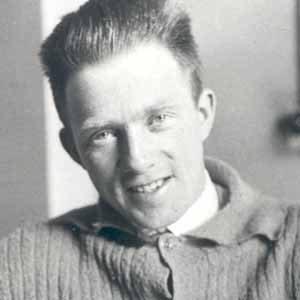 The solution of the difficulty is that the two mental pictures which experiment lead us to form - the one of the particles, the other of the waves - are both incomplete and have only the validity of analogies which are accurate only in limiting cases. (Werner Heisenberg, on Quantum Theory, 1930)This is not correct, the particle properties of light and matter are perfectly explained with a pure Wave Structure of Matter.
The solution of the difficulty is that the two mental pictures which experiment lead us to form - the one of the particles, the other of the waves - are both incomplete and have only the validity of analogies which are accurate only in limiting cases. (Werner Heisenberg, on Quantum Theory, 1930)This is not correct, the particle properties of light and matter are perfectly explained with a pure Wave Structure of Matter.
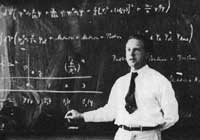 This application of the concept of statistical laws was finally formulated in the second half of the last century as the so-called statistical mechanics. In this theory, which is based on Newton's mechanics, the consequences that spring from an incomplete knowledge of a complicated mechanical system are investigated. Thus in principle it is not a renunciation of determinism.
This application of the concept of statistical laws was finally formulated in the second half of the last century as the so-called statistical mechanics. In this theory, which is based on Newton's mechanics, the consequences that spring from an incomplete knowledge of a complicated mechanical system are investigated. Thus in principle it is not a renunciation of determinism.
The incomplete knowledge of a system must be an essential part of every formulation in quantum theory. Quantum theoretical laws must be of a statistical kind. .. This state of affairs is best described by saying that all particles are basically nothing but different stationary states of one and the same stuff. Thus even the three basic building-stones have become reduced to a single one. There is only one kind of matter but it can exist in different discrete stationary conditions. (Atomic Physics and Causal Law, from The Physicist’s Conception of Nature, Werner Heisenberg, 1958)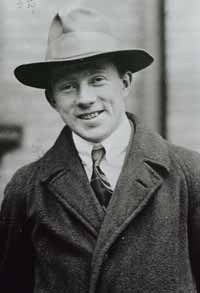 Every word or concept, clear as it may seem to be, has only a limited range of applicability. (Heisenberg, Physics and Philosophy, 1963)
Every word or concept, clear as it may seem to be, has only a limited range of applicability. (Heisenberg, Physics and Philosophy, 1963)
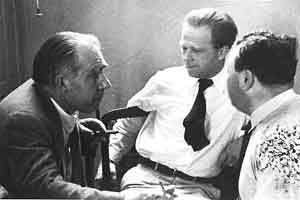 I remember discussions with Bohr which went through many hours till very late at night an ended almost in despair; and when at the end of the discussion I went alone for a walk in the neighbouring park I repeated to myself again and again the question: Can nature possibly be so absurd as it seemed to us in these atomic experiments? (Heisenberg, Physics and Philosophy, 1963)
I remember discussions with Bohr which went through many hours till very late at night an ended almost in despair; and when at the end of the discussion I went alone for a walk in the neighbouring park I repeated to myself again and again the question: Can nature possibly be so absurd as it seemed to us in these atomic experiments? (Heisenberg, Physics and Philosophy, 1963)
Explaining Werner Heisenberg's Uncertainty Principle
If you search on the internet you will find that it is well known that Heisenberg's Uncertainty Principle can be deduced from pure wave foundations.
The significant point of this is that by removing the 'particle' conception of matter and replacing this with the Wave Structure of Matter we can deduce the Uncertainty Principle due to the spatially extended wave nature of matter. The confusion and paradox of Quantum Theory thus results from the incorrect discrete 'particle' conception of matter. As Hawking writes;
(January, 2010)
The importance of this is that Schrodinger was convinced the waves were real and detested Born's probability wave interpretation (which also became universally accepted because it is mathematically true - and maths physicists just love their mathematics.)
Thus the following quotes from Heisenberg are not based upon a wave structure of matter, and this is why they are misleading. I have added comments below the quotes to explain the errors.
Both matter and radiation possess a remarkable duality of character, as they sometimes exhibit the properties of waves, at other times those of particles. Now it is obvious that a thing cannot be a form of wave motion and composed of particles at the same time - the two concepts are too different. (Werner Heisenberg, on Quantum Theory, 1930)
 The solution of the difficulty is that the two mental pictures which experiment lead us to form - the one of the particles, the other of the waves - are both incomplete and have only the validity of analogies which are accurate only in limiting cases. (Werner Heisenberg, on Quantum Theory, 1930)
The solution of the difficulty is that the two mental pictures which experiment lead us to form - the one of the particles, the other of the waves - are both incomplete and have only the validity of analogies which are accurate only in limiting cases. (Werner Heisenberg, on Quantum Theory, 1930) Light and matter are both single entities, and the apparent duality arises in the limitations of our language.
It is not surprising that our language should be incapable of describing the processes occurring within the atoms, for, as has been remarked, it was invented to describe the experiences of daily life, and these consist only of processes involving exceedingly large numbers of atoms. Furthermore, it is very difficult to modify our language so that it will be able to describe these atomic processes, for words can only describe things of which we can form mental pictures, and this ability, too, is a result of daily experience. Fortunately, mathematics is not subject to this limitation, and it has been possible to invent a mathematical scheme - the quantum theory - which seems entirely adequate for the treatment of atomic processes; for visualisation, however, we must content ourselves with two incomplete analogies - the wave picture and the corpuscular picture. (Quantum Theory, Werner Heisenberg, 1930)
We can picture the spherical standing wave structure of matter quite easily in fact. See the wave diagrams page. And because reality is based upon wave motions of space we find wave phenomena all around us, thus explaining why our minds have evolved the ability to understand this.It is not surprising that our language should be incapable of describing the processes occurring within the atoms, for, as has been remarked, it was invented to describe the experiences of daily life, and these consist only of processes involving exceedingly large numbers of atoms. Furthermore, it is very difficult to modify our language so that it will be able to describe these atomic processes, for words can only describe things of which we can form mental pictures, and this ability, too, is a result of daily experience. Fortunately, mathematics is not subject to this limitation, and it has been possible to invent a mathematical scheme - the quantum theory - which seems entirely adequate for the treatment of atomic processes; for visualisation, however, we must content ourselves with two incomplete analogies - the wave picture and the corpuscular picture. (Quantum Theory, Werner Heisenberg, 1930)
 This application of the concept of statistical laws was finally formulated in the second half of the last century as the so-called statistical mechanics. In this theory, which is based on Newton's mechanics, the consequences that spring from an incomplete knowledge of a complicated mechanical system are investigated. Thus in principle it is not a renunciation of determinism.
This application of the concept of statistical laws was finally formulated in the second half of the last century as the so-called statistical mechanics. In this theory, which is based on Newton's mechanics, the consequences that spring from an incomplete knowledge of a complicated mechanical system are investigated. Thus in principle it is not a renunciation of determinism.The incomplete knowledge of a system must be an essential part of every formulation in quantum theory. Quantum theoretical laws must be of a statistical kind. .. This state of affairs is best described by saying that all particles are basically nothing but different stationary states of one and the same stuff. Thus even the three basic building-stones have become reduced to a single one. There is only one kind of matter but it can exist in different discrete stationary conditions. (Atomic Physics and Causal Law, from The Physicist’s Conception of Nature, Werner Heisenberg, 1958)
 Every word or concept, clear as it may seem to be, has only a limited range of applicability. (Heisenberg, Physics and Philosophy, 1963)
Every word or concept, clear as it may seem to be, has only a limited range of applicability. (Heisenberg, Physics and Philosophy, 1963)The problems of language here are really serious. We wish to speak in some way about the structure of the atoms… But we cannot speak about atoms in ordinary language. (Heisenberg, Physics and Philosophy, 1963)
The most difficult problem… concerning the use of the language arises in quantum theory. Here we have at first no simple guide for correlating the mathematical symbols with concepts of ordinary language: and the only thing we know from the start is the fact that our common concepts cannot be applied o the structure of the atoms. (Heisenberg, Physics and Philosophy, 1963)
The violent reaction on the recent development of modern physics can only be understood when one realises that here the foundations of physics have started moving; and that this motion has caused the feeling that the ground would be cut from science. (Heisenberg, Physics and Philosophy, 1963)
Correct. But they started with a particle conception of matter and then found that both Einstein's relativity and quantum physics contradicted this. The error was to move to a particle / probability wave duality, rather than to a Wave Structure of Matter (WSM) that deduces the particle properties of light and matter (as Schrodinger realised).Natural science, does not simply describe and explain nature; it is part of the interplay between nature and ourselves. (Heisenberg, Physics and Philosophy, 1963)
What we observe is not nature itself, but nature exposed to our method of questioning. (Heisenberg, Physics and Philosophy, 1963)
 I remember discussions with Bohr which went through many hours till very late at night an ended almost in despair; and when at the end of the discussion I went alone for a walk in the neighbouring park I repeated to myself again and again the question: Can nature possibly be so absurd as it seemed to us in these atomic experiments? (Heisenberg, Physics and Philosophy, 1963)
I remember discussions with Bohr which went through many hours till very late at night an ended almost in despair; and when at the end of the discussion I went alone for a walk in the neighbouring park I repeated to myself again and again the question: Can nature possibly be so absurd as it seemed to us in these atomic experiments? (Heisenberg, Physics and Philosophy, 1963)The world thus appears as a complicated tissue of events, in which connections of different kinds alternate or overlap or combine and thereby determine the texture of the whole. (Heisenberg, Physics and Philosophy, 1963)
Matter, as a spherical wave structure of space, is interconnected with all other matter in the observable universe. We humans along with all other matter are wave structures of the universe - and it is this spatially extended structure of matter that both enables us to see and interact with the things around us, and gives rise to the statistical aspects of quantum physics due to lack of knowledge of the ensemble. This confirms Einstein's explanation of the statistical foundations of quantum theory, though Einstein made the mistake of working from continuous fields in space-time rather than real waves in space, as continuous fields do not explain discrete quantum phenomena.Explaining Werner Heisenberg's Uncertainty Principle
with the Wave Structure of Matter
If you search on the internet you will find that it is well known that Heisenberg's Uncertainty Principle can be deduced from pure wave foundations.The significant point of this is that by removing the 'particle' conception of matter and replacing this with the Wave Structure of Matter we can deduce the Uncertainty Principle due to the spatially extended wave nature of matter. The confusion and paradox of Quantum Theory thus results from the incorrect discrete 'particle' conception of matter. As Hawking writes;
But maybe that is our mistake: maybe there are no particle positions and velocities, but only waves. It is just that we try to fit the waves to our preconceived ideas of positions and velocities. The resulting mismatch is the cause of the apparent unpredictability. (Hawking, 1988)
Geoff Haselhurst(January, 2010)
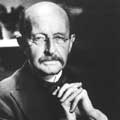
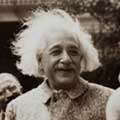
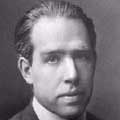
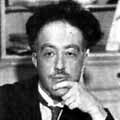
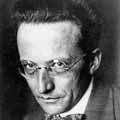
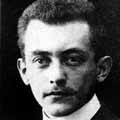
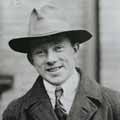
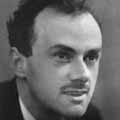
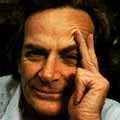
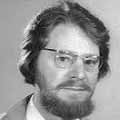
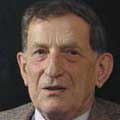
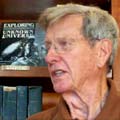
No comments:
Post a Comment